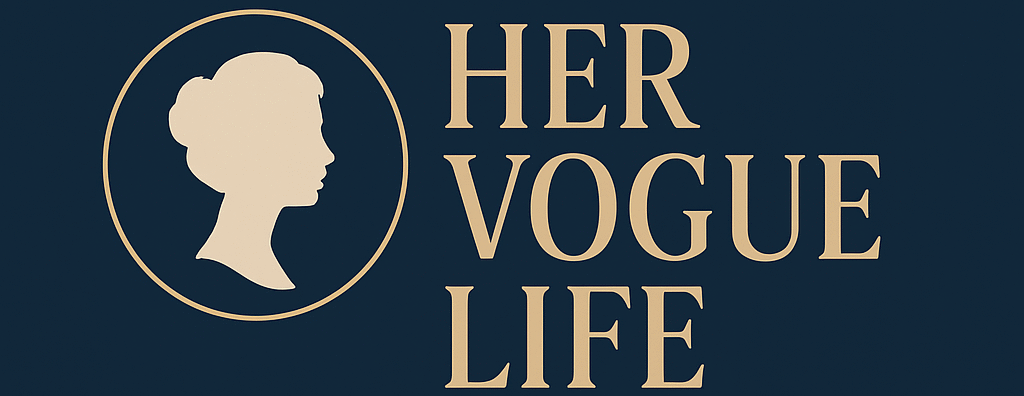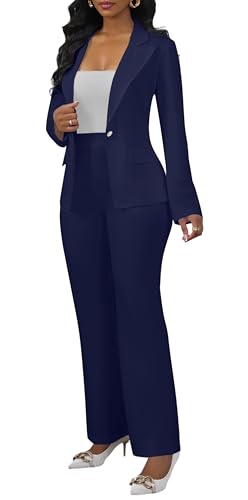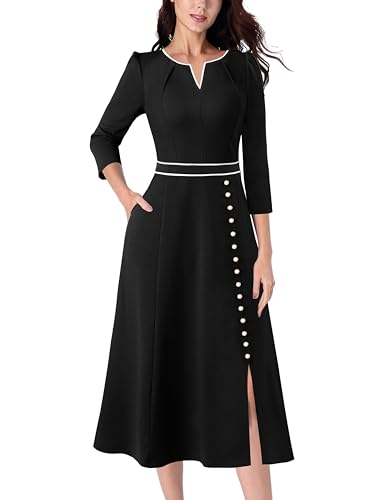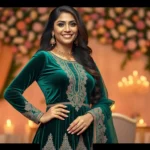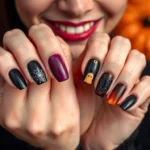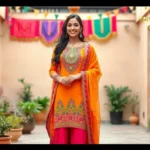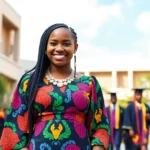Landing your dream job starts with making an unforgettable first impression – and what you wear matters more than you might think. We’ve all heard the saying “dress for the job you want” but when it comes to formal interview attire for women the stakes couldn’t be higher.
Your outfit speaks before you even say a word. Research shows that hiring managers form opinions within the first seven seconds of meeting a candidate. That’s why we’re here to help you navigate the sometimes tricky industry of professional women’s interview attire.
From classic power suits to modern professional separates we’ll guide you through every essential piece that’ll help you command respect and confidence in any interview room. Whether you’re stepping into a corporate boardroom or a creative agency we’ve got the insider knowledge to ensure your formal interview look works as hard as you do.
Choose the Right Suit Style for Your Interview
Selecting the perfect suit style sets the foundation for your interview success. We’ll explore three versatile options that work across different industries and company cultures.
Classic Blazer and Trouser Combinations
Classic blazer and trouser suits remain the gold standard for women’s interview attire. Navy blue blazers paired with matching trousers create an authoritative yet approachable look that works in 85% of corporate environments. Charcoal gray combinations offer similar versatility while projecting sophistication.
Customized fits make all the difference in blazer selection. We recommend structured shoulders that follow your natural silhouette without overwhelming your frame. Single breasted styles with two or three buttons provide clean lines that photograph well during video interviews.
Trouser cuts should complement your body type while maintaining professionalism. Straight leg pants in wool blends offer the most flattering fit for most women. High waisted styles elongate the torso and create a polished silhouette when tucked with blouses.
Skirt Suit Options for Professional Settings
Skirt suits deliver timeless elegance while maintaining interview appropriate coverage. Pencil skirt styles that hit at or just below the knee work best for conservative industries like finance and law. A line skirts provide more movement while still looking professional.
Matching fabric between blazer and skirt creates cohesive looks that command respect. Wool crepe and gabardine fabrics resist wrinkles during long interview days. These materials also photograph well under office lighting.
Color coordination becomes crucial with skirt suits. Black remains the most versatile choice for formal interviews. Deep burgundy and forest green offer sophisticated alternatives that stand out without appearing unprofessional.
Modern Sheath Dress Alternatives
Modern sheath dresses provide contemporary alternatives to traditional two piece suits. These one piece options work particularly well in creative industries where companies value individual style. Structured dresses with clean lines maintain professionalism while showing personality.
Sleeve length impacts the overall formality of sheath dress choices. Three quarter sleeves offer the perfect balance between coverage and modern appeal. Cap sleeves work in warmer climates but may require blazer layering for conservative environments.
Fabric choices determine how professional sheath dresses appear in interview settings. Ponte knits provide structure while allowing comfortable movement. Wool jersey blends resist wrinkles and maintain shape throughout long interview processes.
Select Appropriate Colors for Interview Attire

Choosing the right colors for your interview outfit can make or break that crucial first impression we discussed earlier.
Traditional Navy and Black Choices
Navy remains our top recommendation for women’s interview attire because it projects both authority and approachability. This versatile color works seamlessly across all industries and pairs beautifully with white or light colored blouses for a polished finish. Black commands immediate respect and attention in professional settings, making it our second most trusted choice for formal interviews. We particularly love how black creates a strong, commanding presence while maintaining universal acceptance in corporate environments. Both colors offer the sophistication needed to complement those classic blazer combinations and pencil skirt styles we covered previously.
Sophisticated Gray and Charcoal Options
Gray delivers a modern alternative that’s slightly less formal than black while maintaining complete professionalism. Charcoal tones offer the perfect balance between approachable warmth and serious business intent, making them ideal for creative industries or startups. We find that gray coordinates exceptionally well with pastel or white tops, creating the balanced elegance that hiring managers appreciate. These colors work particularly well with those contemporary sheath dresses and A-line skirts, giving you flexibility while staying within professional boundaries.
Conservative Color Palettes That Command Respect
Conservative palettes extend beyond our core recommendations to include deep blues, dark greens, burgundy, and rich earth tones. These muted selections ensure your qualifications remain the focus rather than your outfit choices. We emphasize sticking to these subtle color families because they respect corporate culture while demonstrating your understanding of professional standards. Earth tones like deep brown or forest green can add personality to your interview look without compromising the authoritative presence you’ve built with your suit selection.
Pick Professional Fabrics and Textures

Fabric selection significantly impacts how professional and polished you appear during interviews. The right material ensures comfort while maintaining that crisp, authoritative look that commands respect.
Wool Blends for Year-Round Versatility
Wool blend fabrics stand as our top recommendation for interview attire across all seasons. These materials provide exceptional structure and polish while naturally resisting wrinkles throughout long interview days. Temperature regulation becomes effortless with wool blends, keeping you comfortable whether you’re interviewing in air-conditioned offices or warmer environments.
Classic wool blend suits deliver that timeless professional appearance that never goes out of style. The fabric’s natural drape creates clean lines that flatter various body types while maintaining shape throughout the day. We particularly appreciate how wool blends photograph well under office lighting, ensuring you look sharp during video interviews or company headshots.
Cotton and Linen for Warmer Climates
Cotton fabrics offer excellent breathability for summer interviews and tropical climates where traditional wool might feel too heavy. Lightweight cotton maintains professionalism while allowing air circulation that keeps you cool and confident. Structured cotton blends resist wrinkles better than pure cotton, making them ideal for travel interviews or long days.
Linen presents a sophisticated option for extremely warm weather, though we recommend choosing linen blends over pure linen. Pure linen wrinkles easily and can appear rumpled after sitting, while linen cotton blends maintain that crisp appearance. The natural texture of quality linen conveys understated elegance without appearing too casual for formal interview settings.
Avoiding Problematic Materials and Patterns
Shiny fabrics like satin or silk can appear too flashy for formal interviews, drawing attention away from your qualifications. These materials often reflect light unfavorably under office fluorescents, creating an unprofessional appearance. We recommend saving lustrous fabrics for evening events rather than daytime interviews.
Busy patterns including large florals or loud prints overwhelm the eye and distract interviewers from focusing on your responses. Solid colors project confidence and authority, while subtle patterns like thin pinstripes or small checks add visual interest without becoming distracting. Clinging materials such as jersey or overly stretchy fabrics fail to provide the structure needed for professional attire.
Materials that wrinkle easily create unnecessary stress on interview days when you need to appear polished from start to finish. Denim and other casual fabrics send the wrong message about your understanding of workplace dress codes, regardless of how expensive or well-customized they might be.
Ensure Proper Fit and Tailoring

Achieving the perfect fit transforms an ordinary outfit into a powerful interview ensemble that commands respect and attention. Professional tailoring ensures your formal dress reflects competence while providing the comfort needed to focus on your interview performance.
Getting the Right Measurements
Accurate measurements form the foundation of exceptional tailoring that elevates your professional appearance. We recommend focusing on six critical areas: bust, waist, hips, shoulder width, sleeve length, and trouser or skirt length to achieve optimal fit.
Professional measurements ensure your blazer sits properly across the shoulders without creating tension or pulling. The shoulder seam should align perfectly with your natural shoulder line, creating a clean silhouette that projects authority.
Sleeve measurements require precision to achieve the polished look that hiring managers expect. Your blazer sleeves should end just at the wrist, revealing a small portion of your blouse cuff for a refined finish.
Waist and hip measurements allow tailors to create the streamlined contour that makes formal wear appear custom made. Proper measurements in these areas prevent the boxy appearance that can undermine your professional image.
Skirt and dress length measurements ensure your hemline falls at knee length or slightly above, maintaining the modest yet confident look that’s appropriate for interview settings.
Key Alteration Points for Women’s Suits
Shoulder alterations represent the most critical adjustment point for achieving a professional appearance that projects confidence. The jacket should lie flat against your shoulders without any puckering, pulling, or visible stress lines that suggest poor fit.
Sleeve length adjustments create the polished finish that distinguishes professionally customized suits from off the rack alternatives. Properly altered sleeves reveal approximately half an inch of your blouse cuff, creating visual interest while maintaining sophistication.
Waist tailoring transforms the silhouette of both jackets and skirts, creating the structured look that commands respect in interview situations. Strategic alterations at the waist eliminate excess fabric while ensuring comfortable movement throughout your interview.
Skirt length modifications ensure your hemline maintains the professional standard that hiring managers expect. Tailors adjust skirts to hit at knee length or just above, providing comfort for sitting and walking while preserving modesty.
Trouser length alterations prevent the bunching and dragging that can create an unprofessional appearance. Properly hemmed pants should lightly graze the top of your shoes without creating excessive fabric pooling at the ankle.
Signs Your Formal Dress Needs Professional Adjustments
Shoulder strain indicates immediate need for professional alterations, as tight blazers create visible pulling across the chest and back. This restriction not only looks unprofessional but also limits your ability to move naturally during handshakes and gestures.
Sleeve length issues become immediately apparent when sleeves extend beyond your wrists or fall too short to reveal any blouse cuff. Both extremes disrupt the polished appearance that’s essential for making strong first impressions.
Movement restrictions signal that your formal wear requires professional attention to ensure interview day comfort. Skirts or pants that prevent comfortable sitting, walking, or reaching compromise both your appearance and confidence during crucial moments.
Visible fabric bunching or pulling across any area of your suit indicates poor fit that professional tailoring can resolve. These issues create unflattering lines that distract from your qualifications and expertise.
Boxy or unstructured appearance suggests your formal wear lacks the customized precision that distinguishes professional attire from casual alternatives. Strategic alterations create the sleek silhouette that projects competence and attention to detail.
Coordinate Appropriate Footwear

Your shoes complete the professional look we’ve carefully crafted with customized suits and appropriate colors. Footwear must complement formal interview attire while maintaining the polished appearance that hiring managers expect within those crucial first seven seconds.
Classic Closed-Toe Pump Selections
Closed-toe pumps represent the gold standard for women’s formal interview footwear. We recommend selecting pumps in neutral colors such as black, navy, or nude to seamlessly match your customized suit or professional dress. Black pumps offer the most versatility, pairing effortlessly with navy blazers, charcoal suits, and conservative color palettes we’ve discussed.
Simple and elegant styling should guide your pump selection, avoiding flashy details or excessive embellishments that might distract from your qualifications. Pumps enhance both skirt suits and pantsuits, creating that commanding professional aesthetic we’re aiming to achieve. Navy pumps work particularly well with gray suits, while nude tones complement lighter fabrics without creating harsh contrasts.
Comfortable Yet Professional Alternatives
Flats provide an excellent alternative when comfort becomes a primary concern during lengthy interview processes. We suggest choosing dark-colored flats in black or navy that maintain the minimalistic approach essential for professional settings. These alternatives lack decorative elements that could compromise the sophisticated look we’ve established.
Low-heeled options such as kitten heels or block heels deliver support while preserving that polished appearance. Block heels offer superior stability compared to stilettos, making them ideal for candidates who’ll be walking through office tours or standing during presentations. Closed-toe loafers work well in business casual environments, though we recommend reserving them for less formal interview settings.
Dressy ballet flats serve as acceptable alternatives when the company culture leans toward modern professional standards. We emphasize balancing comfort with professionalism to maintain confidence throughout your interview experience.
Heel Height Guidelines for Interview Success
Ideal heel height ranges from 1 to 2.5 inches, providing the perfect balance between professional elevation and practical comfort. We strongly advise against excessively high heels that may appear less professional and could cause discomfort during extended interview sessions.
Mid-height heels create a poised appearance while conveying confidence without becoming a distraction from your qualifications. Comfort takes precedence over fashion statements during interviews, so we recommend choosing flats or lower heels if you’re unfamiliar with walking in elevated shoes. Your ability to move gracefully and confidently matters more than achieving maximum height.
Two-inch heels offer optimal positioning for most professional environments, allowing you to maintain proper posture while ensuring stability during handshakes and office navigation. We suggest practicing in your chosen footwear before the interview to guarantee ease of movement and prevent any awkward moments that could undermine your professional presentation.
Add Tasteful Accessories

We complete our polished interview look by selecting accessories that enhance rather than overshadow our professional presentation. Choosing understated pieces demonstrates our attention to detail while keeping the focus on our qualifications.
Minimalist Jewelry Choices
We recommend selecting jewelry that maintains a subtle and professional appearance throughout the interview process. Small stud earrings offer the perfect balance of elegance without creating distractions during conversation. Delicate necklaces should sit close to the neckline and complement our blouse or dress without competing for attention.
Classic wristwatches serve dual purposes by adding sophistication while demonstrating our time consciousness to potential employers. We avoid large, dangling pieces that might create noise or draw unwanted attention during handshakes and gestures. Simple gold or silver pieces work best, and we ensure all metals coordinate throughout our ensemble.
Professional Handbag and Portfolio Options
We choose structured handbags or totes in neutral colors to maintain our professional aesthetic. Black, navy, and tan options provide versatility while complementing most interview outfits seamlessly. Our handbag should be large enough to carry essentials without appearing oversized or cumbersome.
Portfolio cases deserve special attention as they often make the first impression before we do. Slim, professional designs demonstrate our organizational skills while keeping important documents pristine. We ensure our portfolio matches the formality level of our attire and can be carried confidently alongside our handbag.
Leather or high quality faux leather materials project durability and attention to quality. We avoid trendy patterns or bright colors that might date our look or seem inappropriate for conservative industries.
Subtle Scarf and Belt Accents
We incorporate lightweight scarves sparingly to add visual interest without overwhelming our outfit. Neutral toned options in silk or quality synthetic materials drape well and maintain their shape throughout long interview days. Our scarf should complement rather than contrast dramatically with our chosen color palette.
Belts serve primarily functional purposes in professional settings, helping define our waistline and create clean silhouettes. We select minimal designs that match our other accessories in color and finish. Our belt width should be proportionate to our body type and appropriate for the formality of our attire.
These accent pieces work best when they appear intentional yet effortless. We practice styling these accessories beforehand to ensure they enhance our confidence rather than requiring constant adjustment during the interview.
Master Interview-Appropriate Grooming

Grooming details can make or break your professional presentation, often speaking louder than your qualifications. We’ll guide you through essential grooming strategies that complement your polished interview attire.
Professional Hairstyle Considerations
Clean and neat styling forms the foundation of interview-appropriate hair. We recommend washing your hair the night before to ensure it’s fresh without being overly voluminous from same-day washing.
Classic styles like low buns create timeless elegance while keeping hair away from your face during conversations. Position the bun at the nape of your neck or slightly higher for a sophisticated look that works across all industries.
Sleek ponytails offer versatility when styled with a middle or side part and secured with a neutral hair tie. Smooth any flyaways with a light hairspray or styling gel to maintain a polished appearance throughout the interview.
Straightened or softly curled hair works beautifully when kept simple and controlled. Avoid elaborate curls or overly textured styles that might distract from your responses and qualifications.
Conservative colors ensure your hair doesn’t overshadow your expertise during the interview process. Natural tones or professionally maintained highlights are ideal, while avoiding dramatic color changes or unconventional shades.
Conservative Makeup Application Tips
Natural and polished looks enhance your features without creating distractions during important conversations. We suggest practicing your interview makeup routine beforehand to ensure comfort and confidence.
Neutral eyeshadow tones in browns, taupes, or soft grays provide subtle definition while maintaining professionalism. Apply these shades lightly to create depth without appearing overdone or theatrical.
Foundation matching your skin tone creates an even complexion that photographs well and looks natural under various lighting conditions. Choose formulas that won’t fade or become shiny during lengthy interview processes.
Understated lip colors in nude, rose, or soft pink shades complement professional attire while keeping the focus on your qualifications. Avoid bright reds, glossy finishes, or trendy color choices that might seem inappropriate.
Minimal mascara and subtle eyeliner define your eyes without creating dramatic effects that could distract interviewers. One coat of brown or black mascara with thin eyeliner applications work best for conservative environments.
Nail Care and Polish Guidelines
Well-manicured nails demonstrate attention to detail that interviewers often notice during handshakes and document handling. We recommend scheduling a professional manicure 2-3 days before your interview to ensure perfect timing.
Neutral polish colors like light pink, beige, or clear finishes maintain professionalism while showing you care about your appearance. These shades complement any outfit choice and won’t clash with your carefully selected attire.
Proper nail length keeps hands looking professional while allowing for comfortable typing and writing during interviews. Trim nails to extend just beyond your fingertips, avoiding both bitten-down and excessively long styles.
Clean cuticles and smooth nail surfaces project competence and self-care awareness to potential employers. Remove any hangnails or rough edges that might catch on fabrics or create distractions during interviews.
Chip-free application ensures your manicure lasts throughout the entire interview process without requiring touch-ups. Apply base coat, two thin color coats, and top coat for maximum durability and professional appearance.
Avoid Common Formal Dress Mistakes

Even the most expensive formal wear can undermine your interview success if you make critical styling errors. We’ve identified the most frequent mistakes that can derail your professional presentation.
Inappropriate Fit and Sizing Issues
Ill-fitting blazers destroy the polished look you’re trying to achieve. Shoulder seams should sit precisely at your shoulder point, not drooping down your arms or pulling across your back. Sleeves must end at your wrist bone, allowing about half an inch of your shirt cuff to show.
Tight clothing creates unflattering lines and restricts your movement during the interview. We recommend ensuring you can sit comfortably without fabric pulling or gaping at buttons. Your skirt or trousers should allow you to walk confidently without taking shortened steps.
Loose garments make you appear unprofessional and can suggest you don’t pay attention to details. Blazers that are too large create a boxy silhouette that diminishes your presence. Pants that bunch at the ankles or drag on the floor immediately signal poor fit.
Incorrect measurements lead to multiple fit issues that professional tailoring can easily resolve. Taking accurate measurements of your bust, waist, hips, shoulder width, sleeve length, and garment length ensures optimal fit. Investing in alterations transforms average clothing into interview-winning attire.
Distracting Colors and Patterns
Bold patterns draw attention away from your qualifications and can appear unprofessional in conservative industries. Avoid wearing large florals, animal prints, or geometric designs that compete with your message. Subtle textures in solid colors maintain visual interest without distraction.
Bright colors like neon pink, electric blue, or vibrant orange can overwhelm your appearance and seem inappropriate for formal interviews. We suggest sticking to neutral colors like black, white, gray, navy blue, brown, or beige for maximum professionalism. These colors project confidence and competence.
Clashing color combinations create visual chaos that interviewers find distracting. Mixing warm and cool tones inappropriately or combining too many colors in one outfit demonstrates poor judgment. Coordinating your outfit within the same color family creates harmony and sophistication.
Inappropriate seasonal colors can make you appear out of touch with current professional standards. Light pastels work well as subtle accent colors but shouldn’t dominate your outfit. Adding touches of light blue, pale pink, or light yellow can enhance your look without overwhelming it.
Unprofessional Styling Choices
Excessive accessories immediately mark you as someone who doesn’t understand professional boundaries. Wearing multiple statement pieces, chunky jewelry, or oversized accessories creates visual clutter. We recommend minimal classic jewelry and a simple watch to maintain elegance.
Inappropriate hairstyles can undermine your credibility before you speak. Messy hair, extreme colors, or overly elaborate styles distract from your professional message. Styling your hair neatly in classic looks like low buns or sleek ponytails projects competence.
Heavy makeup application suggests you don’t understand professional presentation standards. Bold eyeshadows, dramatic contouring, or bright lipstick colors appear more suitable for evening events than business meetings. Subtle makeup that enhances your natural features maintains professionalism.
Wrong shoe choices can destroy an otherwise perfect outfit. Open-toe shoes, flip-flops, or extremely high heels appear inappropriate for formal interviews. Selecting closed-toe heels, flats, or short boots that you can walk comfortably in demonstrates practical judgment.
Adapt Your Outfit to Different Industries

We understand that interview attire expectations vary significantly across different sectors. Our research reveals that tailoring your formal dress to match industry standards can substantially improve your chances of making a positive impression.
Corporate and Finance Sector Expectations
Conservative two-piece suits form the foundation of appropriate corporate interview attire. We recommend selecting dark colors such as black, navy, or dark grey to project authority and professionalism. Skirts should fall between mid-calf and knee-length to maintain conservative standards that these industries expect.
Professional blouses in white, blue, or pastel colors complement your suit perfectly. We suggest choosing tops with conservative necklines that pair seamlessly with matching jackets. Neutral, skin-tone hosiery becomes essential when wearing skirts, and we emphasize ensuring no runs are visible.
Polished, dark-colored closed-toe shoes with moderate heels complete your professional ensemble. We find that minimal and classic jewelry works best to maintain the sophisticated appearance that corporate environments demand. These conservative choices demonstrate your understanding of traditional business culture.
Creative Industry Professional Standards
Customized slacks paired with stylish blouses offer excellent options for creative industry interviews. We observe that these sectors allow more flexibility while still requiring a polished appearance. Casual dresses that reflect personal style yet remain professional can work effectively in these environments.
Business casual attire opens opportunities for subtle colors or patterns that showcase your creativity. We recommend knee-length skirts or dresses combined with neat hairstyles and makeup to strike the right balance. Your outfit should demonstrate both professionalism and creative sensibility.
Footwear choices expand beyond traditional pumps in creative fields. We suggest clean and professional options such as flats or modest heels that maintain comfort throughout lengthy interview processes. These choices should complement your overall aesthetic while preserving workplace appropriateness.
Healthcare and Education Dress Codes
Business casual attire generally meets expectations in healthcare and education sectors. We find that dress pants, knee-length skirts, blouses, and cardigans or blazers work well for these practical environments. Your clothing should accommodate active work requirements without compromising professional standards.
Comfortable and modest clothing becomes particularly important in these hands-on fields. We recommend selecting pieces that allow for movement and extended wear while maintaining a neat appearance. Your attire should reflect the service-oriented nature of these professions.
Closed-toe shoes that are both polished and comfortable serve as the best footwear choices. We suggest flats or low heels that can withstand long hours on your feet while projecting professionalism. These practical considerations ensure you’ll remain comfortable throughout your interview day.
Prepare Your Interview Outfit in Advance

Smart preparation prevents last-minute wardrobe disasters and ensures you’ll feel confident walking into any interview. Planning your outfit weeks ahead gives you time to find the perfect pieces and make necessary adjustments.
Timeline for Shopping and Alterations
Start shopping for your interview outfit at least three to four weeks before your interview date. This timeline allows enough time to find well-fitting pieces in your preferred colors and styles without rushing through decisions. Professional alterations typically require one to two weeks, so booking your tailor early ensures your suit will fit perfectly.
Browse multiple stores to compare quality and pricing before making final purchases. Department stores like Nordstrom and Macy’s often carry professional women’s suits in various price ranges. Online retailers such as Ann Taylor and Banana Republic offer additional options with detailed sizing guides.
Schedule your initial fitting appointment immediately after purchasing your suit. Most alterations cost between $20 to $80 depending on the complexity of adjustments needed. Common alterations include hemming trousers or skirts, taking in the waist, and adjusting sleeve length for optimal fit.
Final Fitting and Comfort Checks
Complete your final fitting one week before the interview to allow time for any last-minute adjustments. Try on your entire outfit including undergarments, shoes, and accessories to ensure everything works together harmoniously. Sit down, stand up, and walk around to test comfort and mobility in your chosen attire.
Check that your skirt maintains appropriate knee-length coverage when sitting and standing. Blouses should lay smoothly without pulling or gapping at the buttons. Shoes need to feel comfortable enough for walking through office buildings and standing during introductions.
Practice your interview movements while wearing the complete outfit. Shake hands confidently, sit gracefully, and ensure your clothing doesn’t restrict natural gestures. This rehearsal builds muscle memory and prevents awkward adjustments during the actual interview.
Emergency Backup Plan Essentials
Prepare a backup outfit in case of unexpected wardrobe malfunctions on interview day. Keep a second professional blouse or shirt in similar colors that coordinates with your suit. Store this backup in a garment bag to prevent wrinkles and maintain freshness.
Pack an emergency kit containing essential items for quick fixes. Include a lint roller for removing pet hair or fabric pills, stain remover wipes for accidental spills, and safety pins for loose buttons or minor repairs. Add clear nail polish to stop runs in stockings or tights.
Designate a backup pair of polished professional shoes in case of scuffs or comfort issues. Choose shoes in neutral colors like black or navy that complement multiple outfit options. Keep these alternatives clean and ready in your closet for immediate use when needed.
Conclusion
The path to interview success starts with the confidence that comes from knowing you look professionally polished and appropriately dressed. We’ve covered everything from selecting the perfect suit to coordinating accessories that enhance rather than distract from your qualifications.
Remember that your interview outfit should feel like a second skin—comfortable enough to move naturally while projecting the competence and professionalism that hiring managers expect. The investment you make in quality pieces and proper tailoring will serve you well beyond a single interview.
Most importantly don’t let wardrobe concerns occupy valuable mental space on interview day. When you’ve prepared thoughtfully and dressed appropriately you can focus entirely on showcasing your skills and landing that dream position. Your professional appearance should amplify your qualifications not overshadow them.
Frequently Asked Questions
What should women wear to make a strong first impression in a job interview?
Women should opt for a classic power suit in navy blue or charcoal gray, as hiring managers form opinions within the first seven seconds. A well-fitted blazer with tailored trousers or a pencil skirt creates an authoritative yet approachable look. The key is choosing structured pieces with clean lines that exude confidence and professionalism while commanding respect in any interview setting.
How far in advance should I prepare my interview outfit?
Start preparing your interview outfit three to four weeks before your interview date. This timeline allows you to browse multiple stores for quality and pricing, schedule necessary alterations for a perfect fit, and conduct final comfort checks. Having adequate time prevents last-minute wardrobe disasters and ensures you feel confident and polished on interview day.
What colors are best for interview attire?
Navy blue is the gold standard for interview attire, offering authority and approachability. Black commands respect in professional settings, while gray and charcoal provide modern alternatives that balance professionalism with warmth. Stick to conservative palettes including deep blues, dark greens, burgundy, and rich earth tones to ensure your qualifications remain the focus.
Should interview outfits vary by industry?
Yes, interview attire expectations vary significantly across industries. Corporate and finance roles require conservative two-piece suits in dark colors with professional blouses. Creative industries allow more flexibility with customized slacks and stylish blouses. Healthcare and education sectors favor business casual attire that’s comfortable and modest, accommodating active work requirements while maintaining professionalism.
How important is proper fit and tailoring for interview clothes?
Proper fit and tailoring are critical for transforming an outfit into a powerful interview ensemble. Key areas requiring accurate measurements include bust, waist, hips, shoulder width, sleeve length, and trouser/skirt length. Professional alterations address shoulder strain, sleeve length issues, movement restrictions, and fabric bunching to project confidence and competence during interviews.
What type of shoes should I wear to an interview?
Choose classic closed-toe pumps in neutral colors like black, navy, or nude with simple, elegant styling. Heel heights between 1 to 2.5 inches balance professionalism and comfort. For lengthy interviews, consider comfortable alternatives like dark-colored flats or low-heeled options. Always practice walking in your chosen footwear to ensure ease of movement and confidence.
How should I accessorize for a professional interview?
Keep accessories minimal and tasteful. Choose small stud earrings, delicate necklaces, and classic wristwatches for sophistication. Select structured handbags and portfolio cases in neutral colors while avoiding oversized or trendy options. Subtle scarf and belt accents can add visual interest without overwhelming your outfit. Accessories should enhance confidence and appear intentional.
What grooming standards should I follow for interviews?
Maintain clean, professional hairstyles like low buns or sleek ponytails with conservative colors. Apply makeup naturally using neutral eyeshadows, matching foundation, and understated lip colors. Keep nails well-manicured with neutral polish, proper length, and chip-free application. These grooming essentials project competence and attention to detail while enhancing your professional presentation.
What are common interview attire mistakes to avoid?
Avoid ill-fitting garments that detract from a polished appearance. Stay away from distracting colors, patterns, and excessive accessories that draw attention from your qualifications. Don’t wear inappropriate hairstyles, heavy makeup, or unsuitable footwear. These mistakes can undermine your professional presentation and distract from your competencies during the interview process.
Should I have a backup interview outfit prepared?
Yes, always prepare a second professional outfit as an emergency backup plan. Create an emergency kit with essential items like lint rollers, stain remover wipes, and basic sewing supplies for quick fixes. Having backup options prevents wardrobe disasters and ensures you maintain confidence and professionalism regardless of unexpected situations that may arise.
